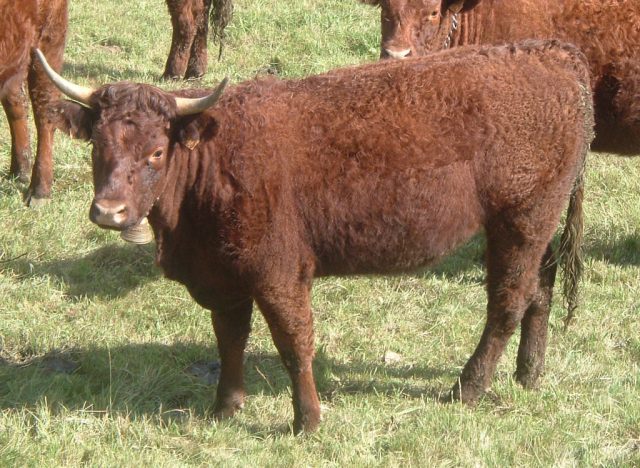Type the name of the breed you're looking for below
[wpdreams_ajaxsearchlite] Don't see the breed your're looking for? Click here and let us know!
Salers cattle
| Place of Origin | France |
| Origin | The historical journey for the Salers breed, was first recorded by archaeologists as depicted from ancient drawings in cave dwellings dated some 7,000 years ago. The drawings were found near Salers, a small medieval town in the center of France. These drawings and the Salers cattle of today, which are very different from all other French breeds, bear some resemblance to the ancient Egyptian red cattle. With such a unique background, the breed is considered to be one of the oldest and most genetically pure of all European breeds. This fact produces a marked positive effect on the predictability of Salers in crossbreeding programs. Salers cattle are now known to be native to the Auvergne region of south central France. This isolated, mountainous area noted for its rough, rocky terrain and harsh, damp climate is characterized by poor soil and a wide range of temperatures throughout the summer and long winter. As the topography allowed for little cereal grain production, the Salers cattle were forced to become foragers with bred-in range-ability to utilize, almost entirely, native grasses in summer and hay in winter. |
| Purpose | Originally bred for work, this dual purpose cow was especially appreciated for its ability to withstand extreme variations in temperature, its fertility, its ease of breeding, its milk (even if the presence of the calf was required in order to milk it) and its meat. In Cantal, the farmers practise mountain pasture, with the herd passing summer at altitude in the mountains. A female can produce almost 3,000 kg (6,614 lb) of fat-rich milk each year of her life. The milk is traditionally used to produce Appellation d'Origine Contrôlée (AOC) cheese such as Cantal and Salers cheese. The Salers is also used to produce veal calves by cross breeding with Charolais cattle. |
| Appearance | They are a large breed, with the female standing 1.40 metres (4.6 feet) tall. They have a thick mahogany red or black coat. |
| Horns | Long, lyre-shaped, light-coloured horns. A small percentage are naturally born without horns (polled). |
| Cows Average Weight | 700 and 750 kg (1,543 to 1,653 lb) |
| Bulls Average Weight | 800 - 900 kg (1,764 - 1,984 lbs) |



